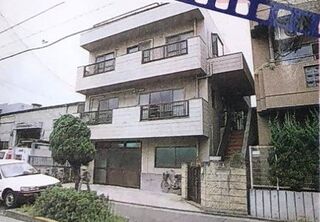Difference between revisions of "Studio 128"
From Sega Retro
m (substub to stub) |
|||
| (8 intermediate revisions by 3 users not shown) | |||
| Line 1: | Line 1: | ||
{{CompanyBob | {{CompanyBob | ||
| logo=Studio128 Building.jpg | | logo=Studio128 Building.jpg | ||
| − | | founded= | + | | division=[[Sega Enterprises, Ltd.|Sega Enterprises]] |
| + | | founded=1986{{ref|https://note.com/beep21/n/n0711bbf1c7f2}} | ||
| headquarters=Japan | | headquarters=Japan | ||
| + | | prevdate=1986 | ||
| + | | prev=[[Sega R&D 1]] | ||
| nextdate=198x | | nextdate=198x | ||
| next=[[Sega R&D 8]] | | next=[[Sega R&D 8]] | ||
}} | }} | ||
| − | {{stub}}'''{{PAGENAME}}''' (スタジオ128) was a [[Sega of Japan]] video game development group | + | {{stub}}'''{{PAGENAME}}''' (スタジオ128) was a [[Sega of Japan]] video game development group which began as a special team within [[Sega R&D 1]].{{ref|https://note.com/beep21/n/n0711bbf1c7f2}} Led by [[Hisashi Suzuki]], the small studio was where programmer [[Yu Suzuki]] created arcade classics such as ''[[Out Run]]'', ''[[After Burner]]'' and ''[[Power Drift]]''. |
| + | |||
| + | Only three games are known to reference the group's existence - in the introductions of ''[[After Burner]]'' and ''[[After Burner II]]'', players take off from an aircraft carrier labeled ''128'', and in ''[[Dynamite Dux]]'', the first stage features a warehouse in the background labeled ''128''. | ||
==History== | ==History== | ||
| − | Located about a five minute walk from [[Sega of Japan]]’s main offices, Studio 128 was manned by five to ten employees which worked on Sega's cutting-edge [[Taikan game|Taikan games]]. Much of its work was kept a secret from the rest of the company. Reportedly even president [[Hayao Nakayama]] was once blocked from entering on one occasion (much to his dissatisfaction). | + | Studio 128 was founded in 1986, following the release of ''[[OutRun]]'', with some of that game's main developers, [[Yu Suzuki]], [[Satoshi Mifune]] and [[Hiroshi Kawaguchi]]{{ref|https://shmuplations.com/afterburner/}}. Located about a five minute walk from [[Sega of Japan]]’s main offices, Studio 128 was manned by five to ten employees which worked on Sega's cutting-edge [[Taikan game|Taikan games]]. Much of its work was kept a secret from the rest of the company. Reportedly, even president [[Hayao Nakayama]] was once blocked from entering on one occasion{{ref|https://shmuplations.com/afterburner/}}{{ref|https://www.eurogamer.net/tales-from-inside-studio-128-sega-am2s-top-secret-studio}} (much to his dissatisfaction). |
Studio 128 was not directly credited in any of their games, making it difficult to discern its history. It is known however to have become [[Sega R&D 8]] prior to the release of ''[[GP Rider]]'' in 1990; Sega R&D 8 would eventually become the more publically-known [[Sega AM2]] in the early 1990s. | Studio 128 was not directly credited in any of their games, making it difficult to discern its history. It is known however to have become [[Sega R&D 8]] prior to the release of ''[[GP Rider]]'' in 1990; Sega R&D 8 would eventually become the more publically-known [[Sega AM2]] in the early 1990s. | ||
| − | |||
==Softography== | ==Softography== | ||
{{CompanyHistoryAll|Studio 128}} | {{CompanyHistoryAll|Studio 128}} | ||
| + | |||
| + | ==Staff members== | ||
| + | {{StaffList|Studio 128}} | ||
==References== | ==References== | ||
Latest revision as of 00:08, 16 December 2024

| ||
| Studio 128 Division of Sega Enterprises | ||
|---|---|---|
| Founded: 1986[1] | ||
Headquarters:
| ||
1986 198x
|
This short article is in need of work. You can help Sega Retro by adding to it.
Studio 128 (スタジオ128) was a Sega of Japan video game development group which began as a special team within Sega R&D 1.[1] Led by Hisashi Suzuki, the small studio was where programmer Yu Suzuki created arcade classics such as Out Run, After Burner and Power Drift.
Only three games are known to reference the group's existence - in the introductions of After Burner and After Burner II, players take off from an aircraft carrier labeled 128, and in Dynamite Dux, the first stage features a warehouse in the background labeled 128.
History
Studio 128 was founded in 1986, following the release of OutRun, with some of that game's main developers, Yu Suzuki, Satoshi Mifune and Hiroshi Kawaguchi[2]. Located about a five minute walk from Sega of Japan’s main offices, Studio 128 was manned by five to ten employees which worked on Sega's cutting-edge Taikan games. Much of its work was kept a secret from the rest of the company. Reportedly, even president Hayao Nakayama was once blocked from entering on one occasion[2][3] (much to his dissatisfaction).
Studio 128 was not directly credited in any of their games, making it difficult to discern its history. It is known however to have become Sega R&D 8 prior to the release of GP Rider in 1990; Sega R&D 8 would eventually become the more publically-known Sega AM2 in the early 1990s.
Softography
X Board
- After Burner II (1987)
- After Burner (1987)
Y Board
- Power Drift (1988)
- Power Drift (unreleased)
Staff members
References
| CollapseTimeline of Sega of Japan research and development divisions |
|---|
|
83
84
85
86
87
88
89
90
91
92
93
94
95
96
97
98
99
00
01
02
03
04
05
06
07
08
09
10
11
12
13
14
15
16
17
18
19
20
21
22
|